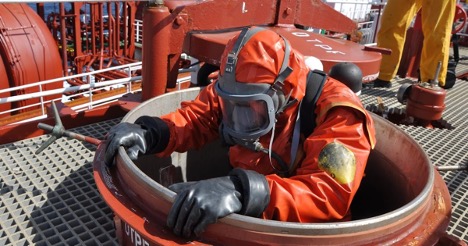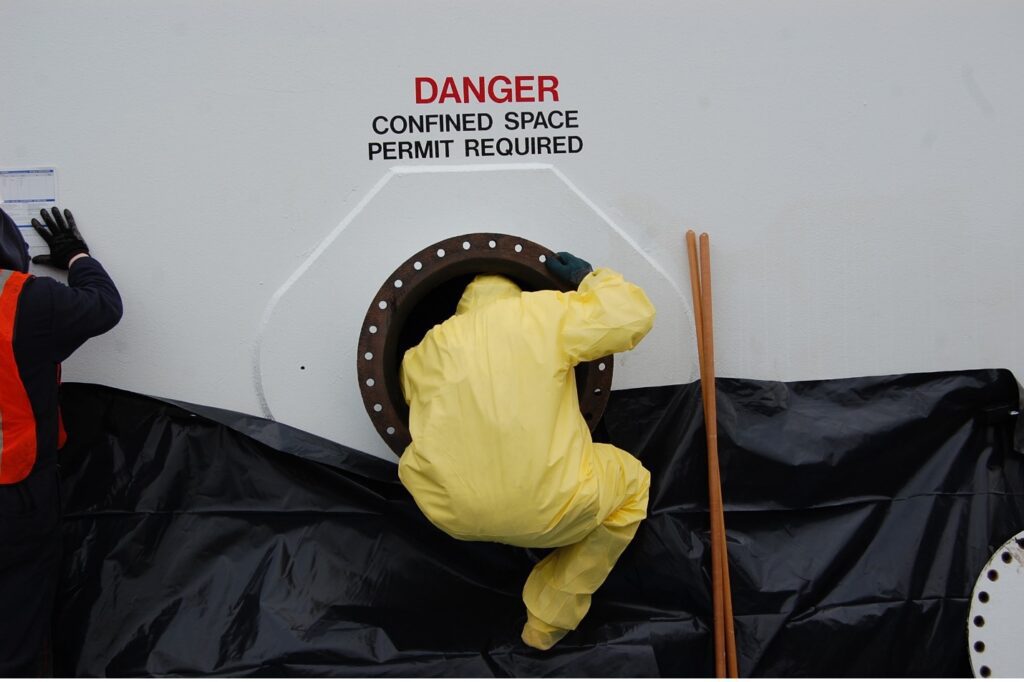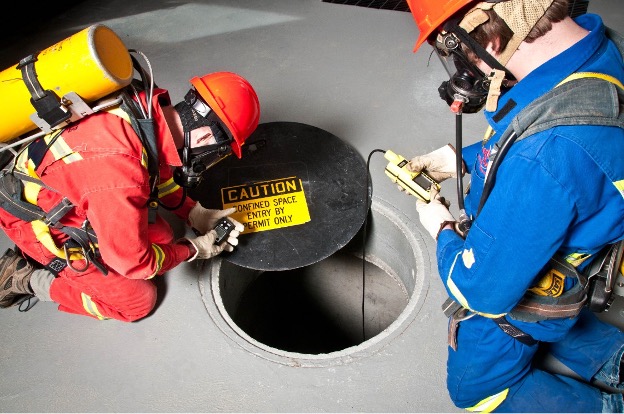Despite the fact that the risks associated with entry into enclosed spaces on ships are well known and discussed extensively in company safety manuals under the ISM code, enclosed space entry fatalities still continue to account for a considerable fraction of deaths at sea to this day.
A 2020 ITF report revealed a total of 145 casualties in enclosed spaces in the past 20 years with 28 of them happening within the last 16 months. If the maritime industry wants to turn this tide, more serious actions are going to have to be taken.
An enclosed space is a space with poor or no natural ventilation which is not designed for continuous occupancy, where access is limited, and which may contain a dangerous atmosphere.

Enclosed spaces on board ships can present a serious hazard to anyone who enters them without the proper preparation and equipment. These spaces are often referred to as “confined” or “restricted” spaces, and they can be found in a variety of locations on board ships. In this article, I’ll talk about the hazards of enclosed spaces on ships and why ships implement what is known as “permit to work” systems.
What Are Enclosed Spaces On Ships?
Enclosed spaces are spaces on ships that have insufficient ventilation, inadequate openings for entry and exit, and are not built for continuous worker use.
These spaces are considered to be unsafe for workers to occupy. Any enclosed place has the potential to have an atmosphere that is either oxygen-deficient or oxygen-enriched, as well as one that contains combustible and/or toxic gases or vapors, which pose a threat to human life.

SOLAS Regulation XI-1/7 Atmosphere testing instrument for enclosed spaces identifies the following areas on ships as possible enclosed spaces: cargo spaces, double bottoms, fuel tanks, ballast tanks, cargo pump-rooms, cofferdams, chain lockers, void spaces, duct keels, inter-barrier spaces, boilers, engine crankcases, engine scavenge air receivers, sewage tanks, and adjacent connected spaces. The regulation further recommends identifying and listing enclosed spaces on a ship-by-ship basis.
For several years ship managers and operators have been struggling with a serious problem: fatal accidents inside enclosed spaces. Despite the implementation of the ISM code and the incorporation of comprehensive enclosed space procedures and measures into the safety management manuals of shipping companies, the incidence of accidents involving enclosed spaces has not diminished, not even in recent years.
In 2016, the International Maritime Organization (IMO) issued a new regulation that went into effect on July 1, 2016. This was done in recognition of the fact that seafarers may be required to enter enclosed spaces on ships in order to manage or obtain equipment, assist a colleague, or inspect vital engine parts. This was done against an increase in the number of fatalities in enclosed spaces.
In order to comply with the regulation, ships are required to carry an appropriate portable atmosphere testing instrument or instruments prior to entering enclosed spaces. These instruments have to be able to measure the concentrations of gases such as oxygen, flammable gases or vapors, hydrogen sulfide, and carbon monoxide at a minimum.
What Are The Hazards Of Enclosed Spaces On A Ship?
The following are some of the dangers that are associated with enclosed spaces on ships:
- A toxic atmosphere.
A toxic atmosphere brought on by the presence or entry of hazardous materials may have a number of immediate repercussions, such as impairment of judgment, and unconsciousness, and even result in death.
- Oxygen Deficiency.
There could be insufficient oxygen in space due to the following reasons:
- air being replaced by another gas,
- different biological or chemical processes,
- air being absorbed onto steel surfaces, especially when those surfaces are wet.
- Oxygen Enrichment.
In the presence of combustible materials, an excess of oxygen increases the risk of fire and explosion. Some substances that do not ignite in air may burn ferociously or even spontaneously in an environment with more oxygen.
- Flammable or Explosive Atmospheres.
A combustible environment increases the possibility of a fire or explosion. Such an environment may develop if flammable gases, liquids, or a suspension of combustible dust in the air are present in the enclosed space. An explosion that releases hot gases and destroys the structure could happen if a flammable environment inside a confined space catches fire.
- Flowing Liquid or Free Flowing Solids.
Solids or liquids entering a confined space can result in burns, asphyxia, drowning, and other traumas. In a small area, it is possible to disturb solids in powder form, creating an asphyxiating environment.
- Excessive Heat.
If temperatures are too high, the enclosed aspect of a confined space might raise the danger of heat stress or collapse. Wearing personal protective equipment or a lack of ventilation may make the risk worse.
- Inadequate Lighting.
Crew members entering confined spaces might not be able to see the environment around them well because of poor lighting.
How Do You Stay Safe When Working In An Enclosed Space?
It is always safest to assume that enclosed spaces are hazardous until proven otherwise. The Maritime industry has always drawn attention to the hazards of enclosed spaces onboard ships and has also always recognized that the environment that one is exposed to in an enclosed space poses the greatest risk due to the air that it contains.
Shipmasters are therefore required to have on board a ‘permit to work’ system in operation to cover “critical shipboard operations that include entry into enclosed spaces.

To address and mitigate hazards in an enclosed space an adequate and detailed risk assessment prior to entry is vital. In this context, officers in charge need to consider and check the following:
- Obtain a work permit from the ship’s captain or officer in charge.
- Make sure that the space is well-ventilated.
- Do a gas check to ensure that there is no risk of explosion.
- Make sure that the space is free from any sources of ignition.
- Test the air quality before entering. The oxygen content should be 21% by volume. Test for any poisonous gasses if it is suspected.
- Select a proper person to perform the task, inform the entering party during the safety meeting of the space restrictions, and provide clear instructions
- Have an emergency response team on standby with a self-contained breathing apparatus (SCBA) on hand.
- Wear proper protective clothing.
- Never work alone. Always ensure at least 2 members do the entry
- Agree on a system of communication between the party outside and among those doing the entry.
- Always stay aware of your surroundings.
Conclusion.
Enclosed spaces can be very dangerous, but with the proper safety measures in place, they can be safely entered.
- Types of Gas Carriers as per IGC Code – April 22, 2025
- Wind-Assisted Propulsion Systems (WAPS): A Game Changer for Maritime Decarbonization – February 6, 2025
- 10 Boat Salvage Yards in California – January 25, 2025





